Montmajour Abbey
Cultural and historical site
1 h 15 min
ruin
Montmajour Abbey is not part of the Three Provençal Sisters of Silvacane, Sénanque and Le Thoronet because Montmajour is not Cistercian. It was a Benedictine abbey with a very eventful history.
Curiously, the 13th and 14th century buildings, such as churches and chapels, are in much better condition than the 18th century classicist monastery which was badly built from the start.
No reproduction is permitted without the written consent of the author. (id5718)

Montmajour Abbey seen from the road
The bus lines 702 (Arles to Salon) and 707 (Arles, Saint-Rémy to Avignon) have both a stop at the Abbaye de Montmajour monastery. All information about the bus lines can be found under Zou! (only french).
Access by car
Montmajour lays between Arles and Fontvieille on the road to the Alpilles.
Parking site
A free parking is north of the road. A pedestrian crossing allows you to cross the D17.
Description
Montmajour Abbey is managed by the French National Monuments. In 2023, the entry price for the self-guided tour is 6 euros, but entry is free for those under 26. The site is generally open between 10 a.m. and 5 p.m.
The site is large and the visit is guided through the various buildings. This progression more or less follows the historical context, but there are of course overlaps. Below follow short explanations in the recommended order of visit.
No reproduction is permitted without the written consent of the author. (id5719)
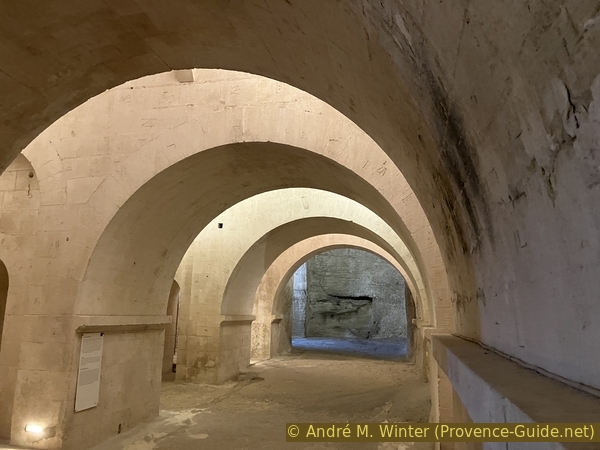
Vaults of the Montmajour crypt
Saint-Benoît crypt
The corridors and halls are impressive. It is ideal when you are there alone to admire the proportions. The construction dates from the 12th century. The crypt has a concentric plan with a central rotunda surrounded by an ambulatory.
No reproduction is permitted without the written consent of the author. (id6022)
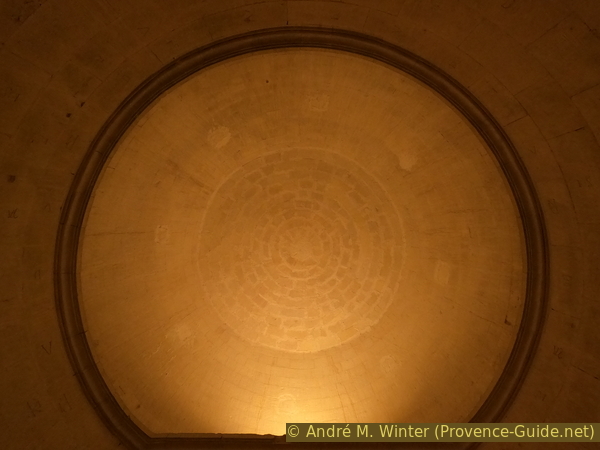
Dome in the Montmajour crypt
The monks' cemetery
We then move on to the outer courtyard. Between the large tower and the apse of the high church (both to be visited later) is the rock cemetery. The tombs are dug into the bedrock and form a veritable maze. This type of burial begins as soon as the establishment of the monastery in the 10th century. It extended far to the Sainte-Croix Chapel.
No reproduction is permitted without the written consent of the author. (id6023)
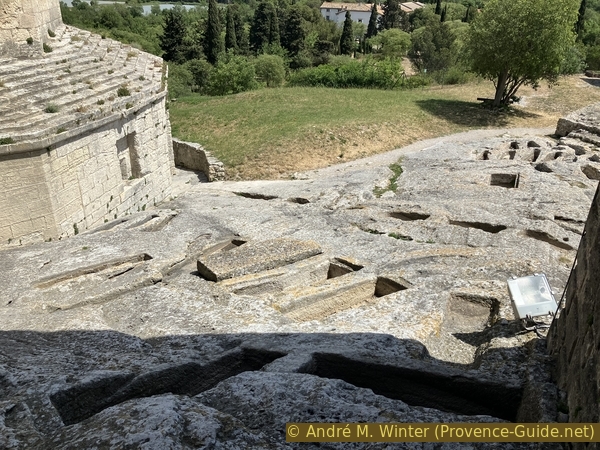
Rock cemetery of the monks of Montmajour
St. Peter's Hermitage
You have to go down a staircase towards the gardens to the south to access the hermitage.
It is a semi-troglodyte chapel built between 1030 and 1050. The dating is possible thanks to the type of the 12 Corinthian style capitals which reappear on this period in Provence. However, Carolingian stylistic elements persist in the rosettes and palmettes, close to Romanesque art.
Under the chapel are the lands once cultivated by the monks.
No reproduction is permitted without the written consent of the author. (id6024)
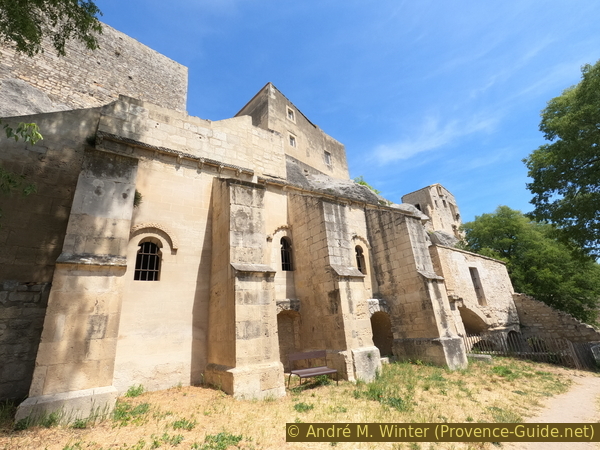
Facade of the Saint-Pierre de Montmajour church
No reproduction is permitted without the written consent of the author. (id6025)
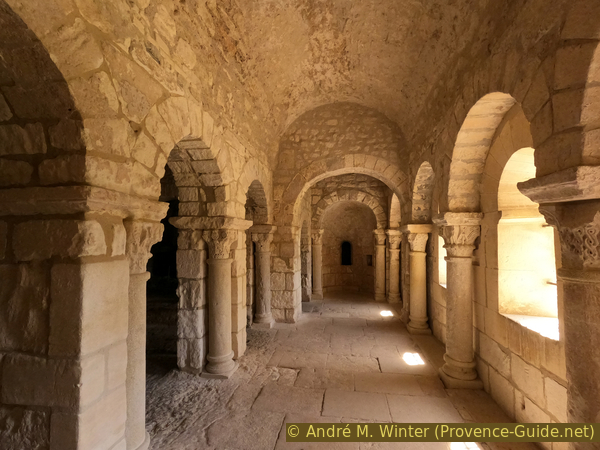
Saint-Pierre de Montmajour church
The Pons de l'Orme tower
The various floors of the 26-meter tower serve as an exhibition on the site and other historical places in the region.
The tower was built on the initiative of the cardinal abbot Pons de l'Orme the time of the great troubles in Provence. It is a real abbey castle, known as the abbot's keep, completed in 1370.
No reproduction is permitted without the written consent of the author. (id6026)
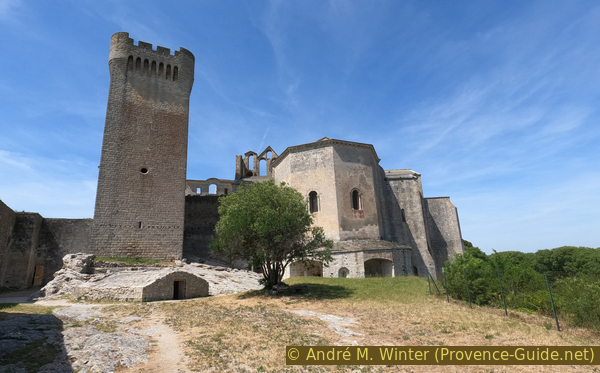
Tower of Pons de l'Orme and the apse of the abbey church of Montmajour
The Holy Cross Chapel
It was built on purpose outside the monastery walls in the 12th century to confine the many visitors there and keep them away from the tranquility of the monastery.
It is now private and cannot be visited. Repeated attempts to by it by public entities have failed.
No reproduction is permitted without the written consent of the author. (id6027)
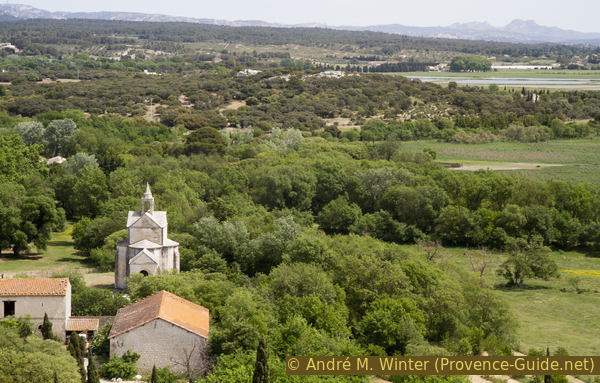
Sainte-Croix de Montmajour chapel
The cloister of Montmajour
It is started and finished during the 12th century. Its proportions are particularly generous with galleries over four metres wide forming a rectangle of 24 by 27 metres.
No reproduction is permitted without the written consent of the author. (id6028)
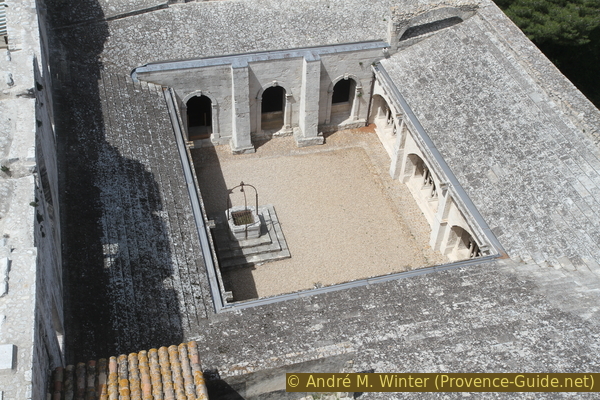
Cloister of Montmajour seen from the tower
Laminated leaflets available there explain all the capitals and consoles of the cloister.
No reproduction is permitted without the written consent of the author. (id6036)
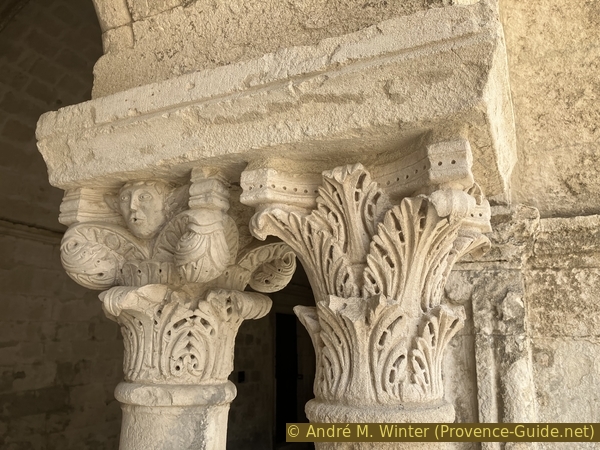
Capitals of the cloister of Montmajour
No reproduction is permitted without the written consent of the author. (id6037)

Corner pillar with St. Peter and Abbot Guillaume de Bonnieux
The abbey church of Notre-Dame
Like the cloister, the church was built over several campaigns but fully completed in the 12th century. The church is contemporary with the Saint-Trophime cathedral in Arles. It remains in good condition and has been little affected by the vagaries of history and the restorations undertaken from the 19th century. The rare wall decorations are however ravaged by time.
No reproduction is permitted without the written consent of the author. (id6038)
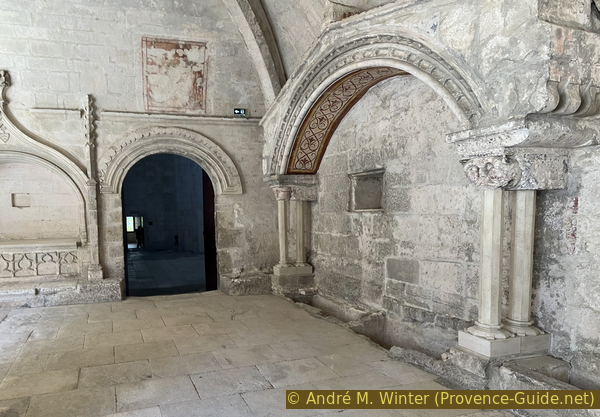
Passage to the church and the tomb of the counts of Provence in the cloister of Montmajour
Saint-Maur monastery
A new monastic building was erected from 1703. Resolutely modern in spirit with its verticality. It is connected to the medieval buildings by a large arch which spans the old yard. The building has some major flaws though like a poorly designed bakery. The devastating fire of 1726 started there. The building was certainly raised even higher in 1748, but it ended up as a stone quarry after the Revolution. The current stabilization of the ruin dates from 2012.
No reproduction is permitted without the written consent of the author. (id6029)
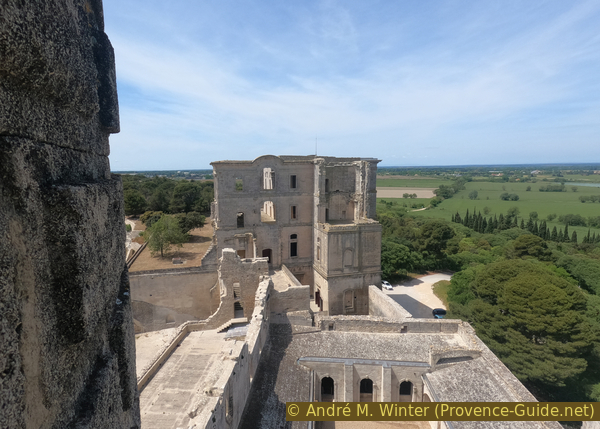
Ruin of the Saint-Maur monastery and the cloister at Montmajour seen from the tower
No reproduction is permitted without the written consent of the author. (id6032)
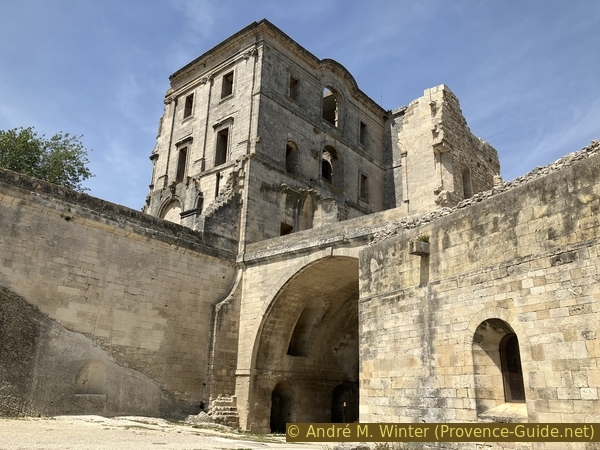
Ruin of Saint-Maur monastery in Montmajour
No reproduction is permitted without the written consent of the author. (id6033)
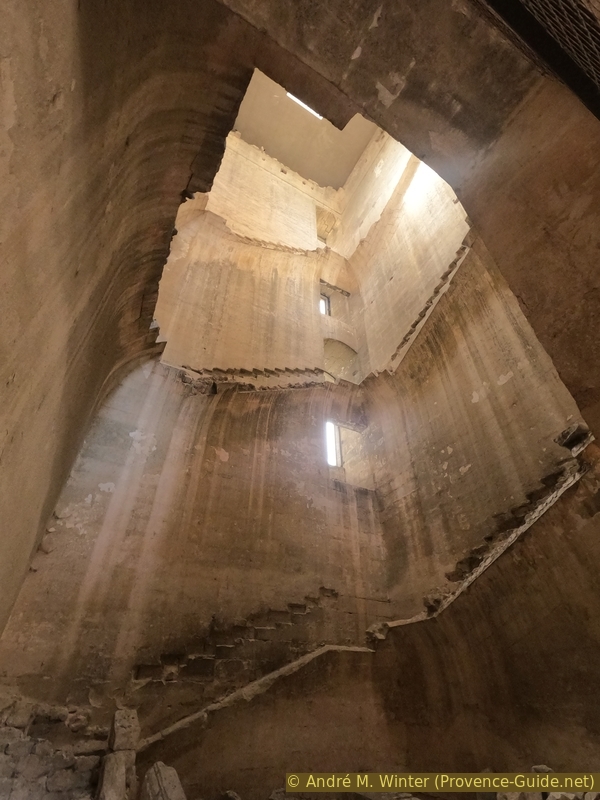
The small staircase of the Monastery of St. Maur
No reproduction is permitted without the written consent of the author. (id6034)

St. Maur Monastery Bread Oven
The gatehouse
This terrace with
No reproduction is permitted without the written consent of the author. (id6030)
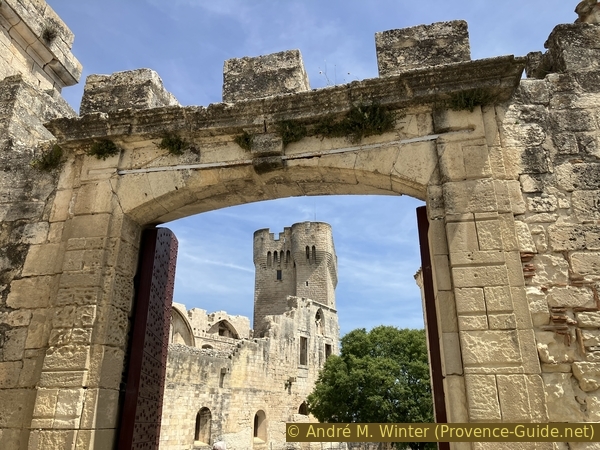
View through the gatehouse
No reproduction is permitted without the written consent of the author. (id6031)
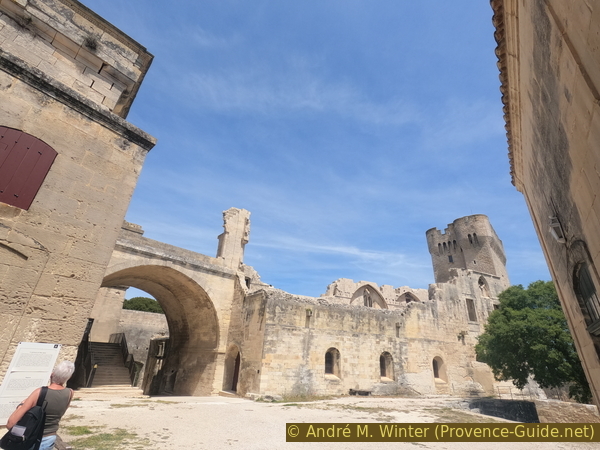
Monumental arch between the medieval and newer parts of Montmajour
There are other rooms to look at like the refectory which are used for exhibitions.
No reproduction is permitted without the written consent of the author. (id6039)
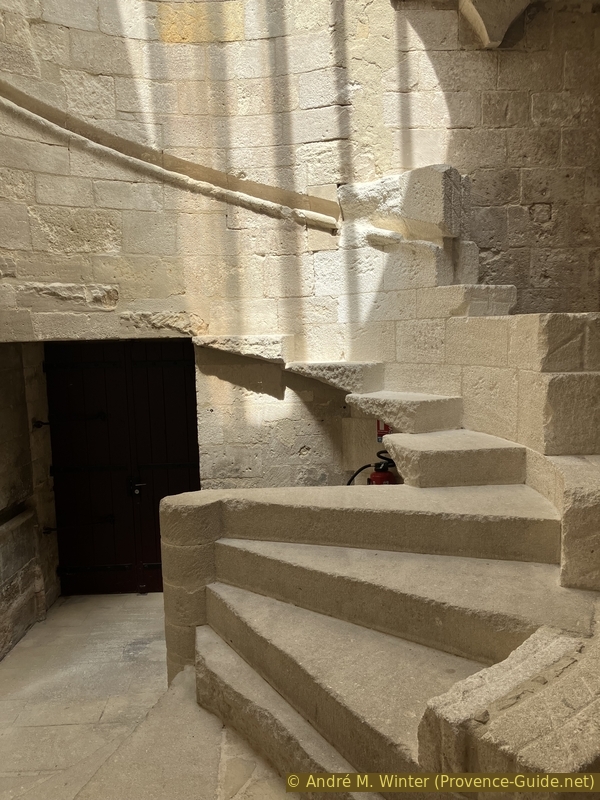
Spiral staircase in ruins of the refectory of Montmajour
No reproduction is permitted without the written consent of the author. (id6035)
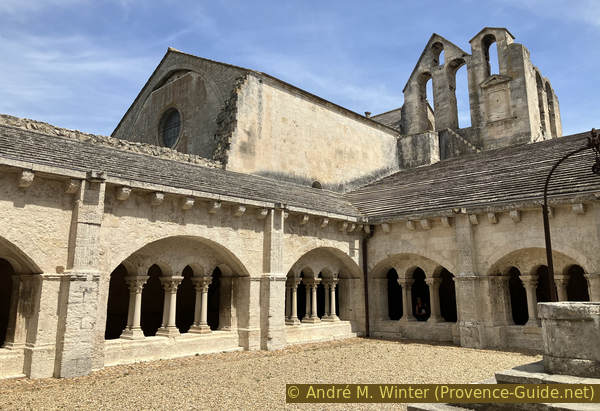
Cloister and adjoining abbey church of Montmajour